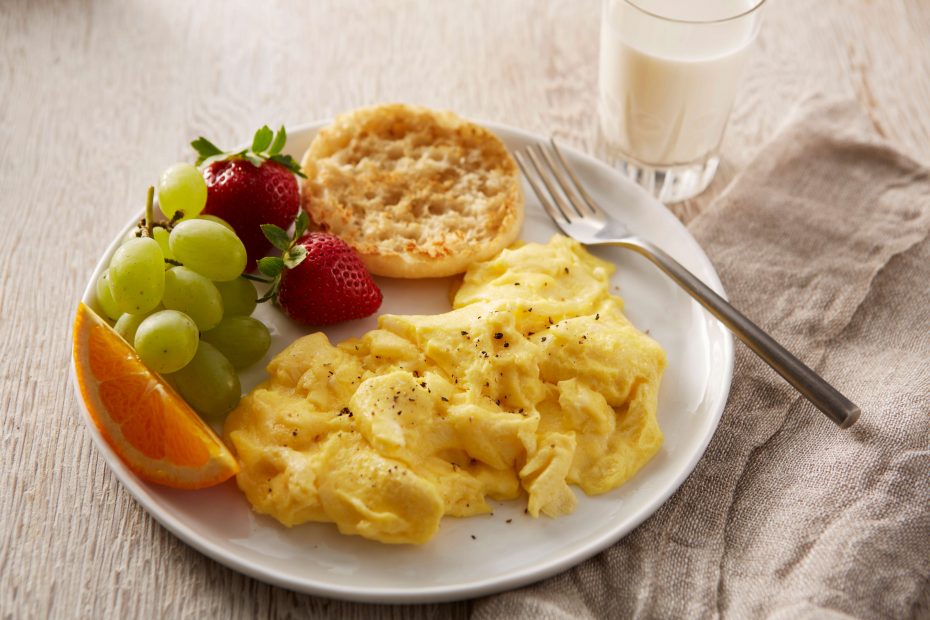Learning how to make easy scrambled eggs can be fun! Spice up this easy egg favorite by adding pepper jack and salsa or lighten it up by substituting cooking spray and water for the butter and milk.
Avoid cast iron. Eggs scrambled in a cast iron skillet can turn a greenish shade. This harmless but unappealing color change is the result of a chemical reaction between iron in the pan and sulfur in egg whites.
Don’t overcook. The heat retained in the pan will continue to cook and firm up the eggs after pan is removed from heat.
How long to beat? It’s a matter of preference. Light beating produces more dense scrambled eggs. Vigorous beating aerates the eggs, resulting in lighter fluffier curds.
Holding scrambled eggs: It’s best to serve scrambled eggs as soon as they are cooked, but if necessary, they can be held for a short time. Place the skillet of cooked eggs over a pan of hot water rather than over direct heat

